Day two in Ireland and we have had another day of sunshine. Think it may change tomorrow though. But for our excursions today the weather has been perfect! We started the day with a quick look at the city of Dublin. Unfortunately for Eugene our bus driver, the going was really slow. New tram lines are being laid in the city and dealing with the traffic was terrible. It would have been quicker to walk!
Patrick pointed out the Georgian style architecture and the famous Georgian coloured doors. We stopped for a photo of the most famous, No 46 on Fitzwilliam Street. The next stop was for a photo of the St Patrick's Cathedral, which has been built on the highest part of the city in the 'Old Town'. The architecture of the Cathedral is Gothic style. Typical Gothic is the narrow, pointed windows and square towers. From there it was down to drive alongside the river Liffey, which divides the town into two - north and south. Dublin is going through a mini boom after the economical crash of 2008, which coincided with a series of banking scandals.
Eugene eventually got us to Trinity College in time for our tour of the grounds by Jeff, who is a very educated young man with many degrees to his name. He said with a lovely grin "That his mother is very proud and he is very employable"! He has also studied at Cambridge. He even wore the Trinity robe for the tour. Obviously it was his choice to do so today, as it is not a necessity. Maybe because he is just waiting for the final result of his examination corrections.
One of the things Jeff told us about the College Chapel was that if students have passed whatever they have studied at the College, they can get married in the Ecumenical Chapel. But it must be within five years of them leaving. It has been an Ecumenical Chapel since 1970. Trinity is a sister college to Cambridge and Oxford and was established in 1592. The College grounds cover 47 acres in the middle of the city. The library has 6.2 million books and they add a kilometre of new shelving to the library every year.
The main purpose of the visit to Trinity College was to see the 'Book of Kells'. The 'Book of Kells' is famous because of the time it was written, the animal skin it has been written on and it's lavish decoration. Abstract decoration and images of plant, animal and human ornament, punctuate the text with the aim of glorifying Jesus’ life and message, and keeping his attributes and symbols constantly in the eye of the reader. It is written in Latin.
The scribes that wrote the 'Book of Kells' were four in number. It is said the first was conservative and sober. The second enjoyed using coloured inks and the third and fourth copied the bulk of gospels Matthew, Mark and Luke. Guess the first must have scribed John's gospel. I didn't see anything about the book of John when I typed the above info from a display panel.
The 'Book of Kells' is written on vellum (calfskin). Vellum represented a valuable resource and it has been calculated that the 'Book of Kells' in its original state used the skins of 185 calves. Quill pens were made from the tail feathers of swan or goose. Some could have been made from reeds. The original binding of the book has not survived. Most of the text pages have been written in brownish gall-tannic ink known as iron gall ink, which is made from oak apples mixed with iron sulphate and wine or vinegar. The scribes applied their pigments with great creativity. In 1953 the book was rebound by Trinity College, in four volumes, one for each gospel. Only two of the gospels are on display at one time and two pages of each are visible to the public. The two books are locked in a bullet proof glass cabinet. There are no photos and there is high security in the room. The pages of the books are turned every two days. The 'Book of Kells' was scribed by monks in Scotland and although the exact day cannot be ascertained, it is thought around the year 800. It was brought to Trinity College around 1656.
One could take photos in the 'Long Room' of the Library. In 1802 around 20,000 books were purchased by the College. The Long Room is nearly 65 metres long and it now houses 200,000 of the Colleges oldest books. The books are stored by size. The biggest at the bottom and the smallest at the top. Wooden ladders are used to access the books.
We grabbed a sandwich for an early lunch and left at 12 to go to Glendalough, which was about an hours drive from Dublin. 'Glendalough' means 'valley of two lakes' and it is in a glacial valley. The remains of a 6th century monastic medieval settlement is in this protected valley, and it was founded by Saint Kevin. Over 1 million visitors visit the site each year. There is a comprehensive display area in the Visitor Centre, which we were taken to first, then we were shown a film, followed by a guided tour of the entrance, round tower, cathedral, St Kevin's Cross, St Kevin's Church and the Priests House. Once the guide left us we walked the 10 minute track down to the lower lake. The weather was very good, the trees just starting to turn to autumn shades, and on such a day there were stunning views.
We arrived back at the Hotel at 4.30pm and had just enough time to shower and get ready to go to the Irish dinner and evening of entertainment. It was at Taylor's Three Rock Restaurant in the foothills of the Dublin Mountains, about a half hour drive from the Doubletree. It was a very large thatched building, said to be the largest thatched building in Europe. It was big, and there were a lot of tour buses there. So that meant lots of tourists. The dinner was served quickly though, and we did have four choices for two of the courses. The entertainment was excellent. The musicians so talented. One of the guys could play any musical instrument. The Irish River Dancing was fabulous and the old Irish comedian, who has been in the business for 50 years, had us in fits of laughter.
A great way to finish our actual first day of the tour.
Trinity College, Glendalough & an Irish Show
Tuesday, September 20, 2016
 Dublin, County Dublin, Ireland
Dublin, County Dublin, Ireland
Other Entries
-
32A little exploring of Tavistock
Sep 0119 days prior Tavistock, United Kingdomphoto_camera24videocam 0comment 3
Tavistock, United Kingdomphoto_camera24videocam 0comment 3 -
33A visit to Aunty Kath's & Kit Hill
Sep 0218 days prior Callington, United Kingdomphoto_camera16videocam 0comment 1
Callington, United Kingdomphoto_camera16videocam 0comment 1 -
34Boundy family gathering with the Aussies
Sep 0317 days prior Launceston, United Kingdomphoto_camera10videocam 0comment 1
Launceston, United Kingdomphoto_camera10videocam 0comment 1 -
35Sad to say another 'Goodbye'........
Sep 0416 days prior Harrowbarrow England, United Kingdomphoto_camera14videocam 0comment 1
Harrowbarrow England, United Kingdomphoto_camera14videocam 0comment 1 -
36A walk around the docks of Southampton
Sep 0515 days prior Southampton, United Kingdomphoto_camera22videocam 0comment 0
Southampton, United Kingdomphoto_camera22videocam 0comment 0 -
37Checking out Hailsham with Aunty Gwen
Sep 0614 days prior Hailsham, United Kingdomphoto_camera26videocam 0comment 0
Hailsham, United Kingdomphoto_camera26videocam 0comment 0 -
38A Visit to the Millennium Seed Bank at Wakehurst
Sep 0713 days prior Hailsham, United Kingdomphoto_camera24videocam 0comment 1
Hailsham, United Kingdomphoto_camera24videocam 0comment 1 -
39Peter meets a cousin for the first time...
Sep 0812 days prior Portsmouth, United Kingdomphoto_camera4videocam 0comment 2
Portsmouth, United Kingdomphoto_camera4videocam 0comment 2 -
40A Visit to Tiveys Farm
Sep 0911 days prior Shackerstone, United Kingdomphoto_camera36videocam 0comment 5
Shackerstone, United Kingdomphoto_camera36videocam 0comment 5 -
41A visit to Wetherby..Award winning floral town
Sep 128 days prior Wetherby, United Kingdomphoto_camera16videocam 0comment 1
Wetherby, United Kingdomphoto_camera16videocam 0comment 1 -
42You just don't get a day like this in Whitby.....
Sep 137 days prior Whitby, United Kingdomphoto_camera23videocam 0comment 3
Whitby, United Kingdomphoto_camera23videocam 0comment 3 -
43A visit to Fountains Abbey in the Yorkshire Dales
Sep 146 days prior Ripon, United Kingdomphoto_camera20videocam 0comment 1
Ripon, United Kingdomphoto_camera20videocam 0comment 1 -
44Just the two of us.....a day of exploring York
Sep 155 days prior York, United Kingdomphoto_camera30videocam 0comment 0
York, United Kingdomphoto_camera30videocam 0comment 0 -
45Sorting, weighing, posting and a Wharfe walk
Sep 164 days prior Wetherby, United Kingdomphoto_camera12videocam 0comment 0
Wetherby, United Kingdomphoto_camera12videocam 0comment 0 -
46Tracing the 'Carrott' routes today
Sep 173 days prior Boston, United Kingdomphoto_camera32videocam 0comment 2
Boston, United Kingdomphoto_camera32videocam 0comment 2 -
47Time to hand back the 'Black Jag'.....
Sep 182 days prior London, United Kingdomphoto_camera18videocam 0comment 5
London, United Kingdomphoto_camera18videocam 0comment 5 -
48Our flight to Dublin and our Welcome Dinner
Sep 191 day prior Dublin, Irelandphoto_camera6videocam 0comment 2
Dublin, Irelandphoto_camera6videocam 0comment 2 -
49Trinity College, Glendalough & an Irish Show
Sep 20 Dublin, Irelandphoto_camera34videocam 0comment 0
Dublin, Irelandphoto_camera34videocam 0comment 0 -
50National Horse Stud, Hurling & then Cork
Sep 211 day later Cork, Irelandphoto_camera16videocam 0comment 0
Cork, Irelandphoto_camera16videocam 0comment 0 -
51Lots fitted into the day & Celtic Show to fini
Sep 222 days later Killarney, Irelandphoto_camera22videocam 0comment 1
Killarney, Irelandphoto_camera22videocam 0comment 1 -
52The Ring of Kerry
Sep 233 days later Killarney, Irelandphoto_camera16videocam 0comment 0
Killarney, Irelandphoto_camera16videocam 0comment 0 -
53Around the Dingle Peninsula
Sep 244 days later Limerick, Irelandphoto_camera28videocam 0comment 1
Limerick, Irelandphoto_camera28videocam 0comment 1 -
54The 'Cliff's of Moher'......Ireland's Jewel
Sep 255 days later Galway, Irelandphoto_camera22videocam 0comment 3
Galway, Irelandphoto_camera22videocam 0comment 3 -
55A Boat Trip to 'Inishmore' one of the Aran Islands
Sep 266 days later Galway, Irelandphoto_camera26videocam 0comment 2
Galway, Irelandphoto_camera26videocam 0comment 2 -
56A long drive....and now Northern Ireland
Sep 277 days later Londonderry, United Kingdomphoto_camera22videocam 0comment 3
Londonderry, United Kingdomphoto_camera22videocam 0comment 3 -
57Travelling the Antrim Coast & Giants Causeway
Sep 288 days later Ballygalley, United Kingdomphoto_camera26videocam 0comment 0
Ballygalley, United Kingdomphoto_camera26videocam 0comment 0 -
58The final day of 'Country Roads of Ireland' tour
Sep 299 days later Belfast, United Kingdomphoto_camera36videocam 0comment 2
Belfast, United Kingdomphoto_camera36videocam 0comment 2 -
59An early start...Dublin...then London
Sep 3010 days later London, United Kingdomphoto_camera8videocam 0comment 0
London, United Kingdomphoto_camera8videocam 0comment 0 -
60Sad to say 'Goodbye'....maybe we will be back
Oct 0111 days later Harlington, United Kingdomphoto_camera44videocam 0comment 1
Harlington, United Kingdomphoto_camera44videocam 0comment 1 -
61After 20 years....we are having another visit
Oct 0212 days later Singapore, Singaporephoto_camera10videocam 0comment 3
Singapore, Singaporephoto_camera10videocam 0comment 3 -
62A day riding the Hop on Hop off bus
Oct 0313 days later Singapore, Singaporephoto_camera24videocam 0comment 1
Singapore, Singaporephoto_camera24videocam 0comment 1 -
63Two lovely days of sightseeing in Singapore
Oct 0414 days later Singapore, Singaporephoto_camera32videocam 0comment 2
Singapore, Singaporephoto_camera32videocam 0comment 2 -
64Home today....it is time......
Oct 0515 days later Geraldton, Australiaphoto_camera16videocam 0comment 5
Geraldton, Australiaphoto_camera16videocam 0comment 5

 Dublin, County Dublin, Ireland
Dublin, County Dublin, Ireland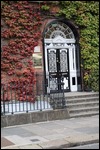
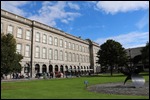
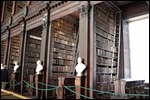
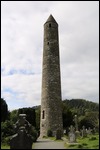
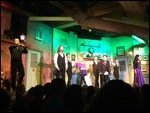





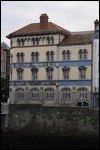
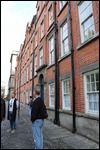
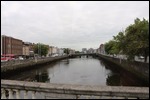
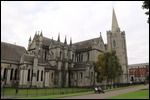
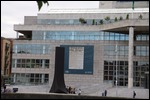
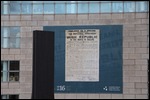
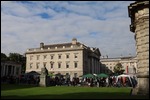
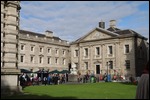
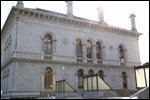
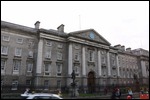
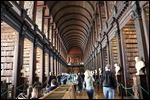
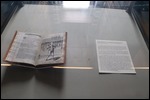
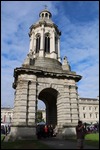
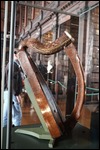
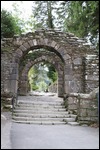
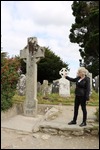
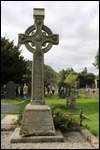
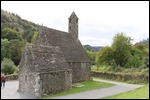
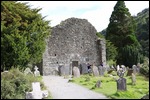
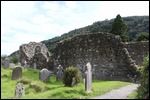
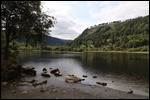
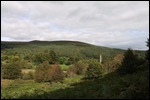
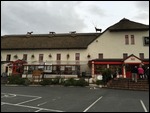
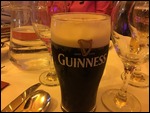
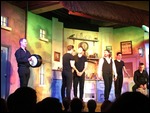
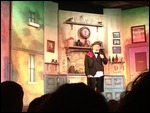
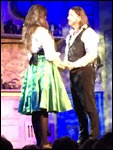
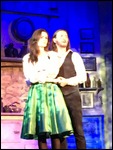
2025-05-23